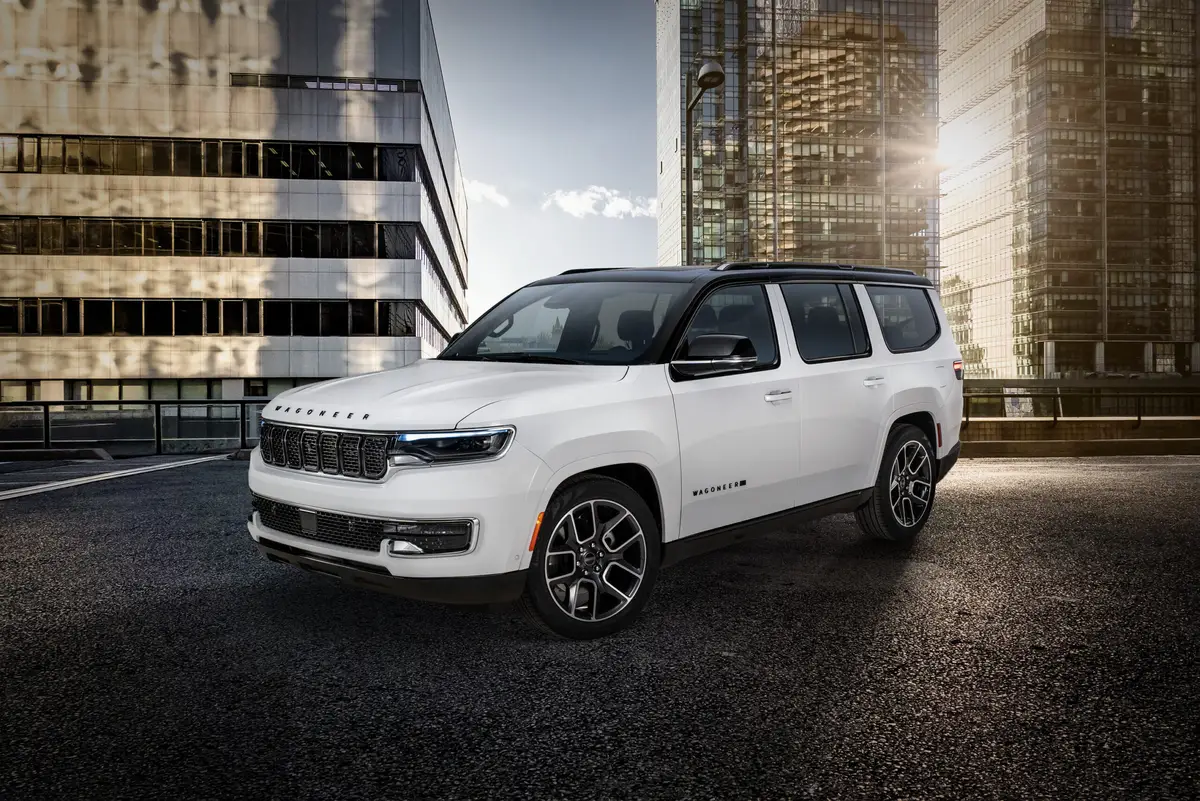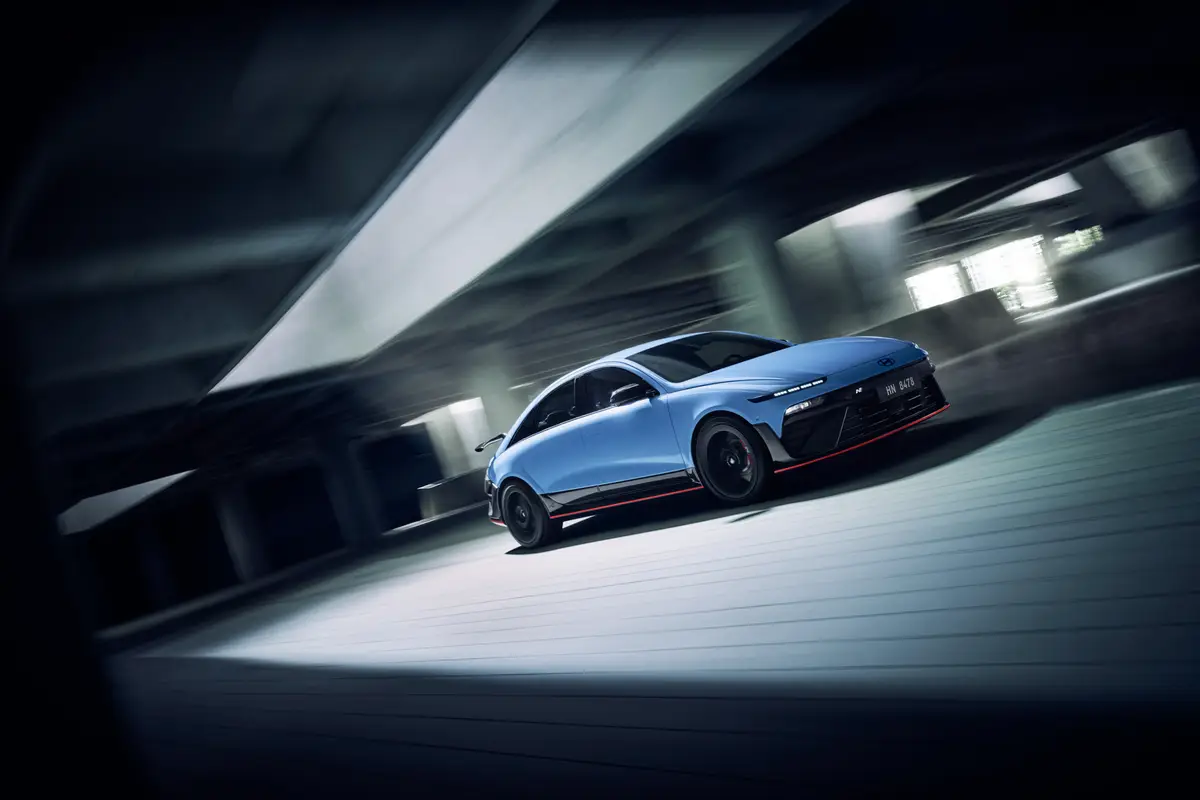Star-Telegram.com's view
There’s no oddball styling that pronounces to the world that it’s a “green” car, just a small badge on each front fender that says “Hybrid” and a smaller badge on the right side of the rear end that says “Hybrid Synergy Drive.”
So if you’re wanting a gasoline-electric hybrid car to make an obvious statement to your fellow motorists that you’re energy- and environmentally conscious, the all-new, 2007 Toyota Camry Hybrid might not be the vehicle for you.
Likewise, if your goal is to save as much money as you can, this car might not be what you need, either. You can buy a base Camry with an automatic transmission for $18,850 (including $580 freight) and get pretty decent fuel economy (24 miles per gallon city/33 highway); the hybrid begins at $26,480, and is EPA rated at 40 mpg city/38 highway.
But the Camry hybrid has more standard equipment. Toyota says the hybrid is about $1,500 more than a comparably equipped four-cylinder Camry, yet has more power (187 horsepower overall vs. 158 for the gasoline-only model).
And it’s possible that you could qualify for the $2,600 federal tax credit with purchase of the hybrid, which would make it less than the cost of a comparable gasoline-only Camry.
Toyota says current tax law will allow the full credit to the first 60,000 combined sales of all Toyota hybrid models this year, which the company says should occur sometime in September. For the next six months, the tax credit would be just $1,300; then it would be lowered to $650.
Without any tax credit, it might take a while to recoup the extra cost of the hybrid at the gas pumps. If you’re the type who trades cars every two or three years, you might not realize any savings at all.
But if you want a cool car, with the latest technology, lots of room, decent styling, outstanding quality, and killer fuel economy (for its size), hurry on down to your Toyota dealer.
This car represents the first application of Toyota’s patented hybrid drive system in a mass-market, conventionally styled midsize sedan.
Toyota will sell all of these that it can make. As with other hybrids, though, production will be limited, so actually getting one of the new Camry hybrids might take a while.
Toyota says waiting time can range from little or nothing at some dealers to 45 days, according to how many each dealer has sold. More than two-thirds of the first-year’s allocation have been pre-sold in this region, the company said. There will be waiting lists, especially now that gasoline prices have spiked again.
The Camry hybrid costs about $5,000 less than the similar Honda Accord hybrid. The biggest difference is that Honda loads its hybrid model with just about everything you can put on an Accord, while Toyota lets you choose extras to add to the Camry.
But if you don’t want to add anything to the Camry, you still have a very nice midsize hybrid sedan for the base price. And even with extras such as leather interior, heated seats/outside mirrors, and a floor-mat package, our test car topped out at just $28,527, about $2,500 less than a comparably equipped Accord.
Toyota would argue that its hybrid system is superior to the one used by Honda. The Camry hybrid uses a 147-horsepower, 2.4-liter, Atkinson-cycle, four-cylinder gasoline engine and a permanent-magnet electric motor to give it the combined 187 horsepower.
Honda uses a 3.0-liter V-6 engine in the Accord hybrid, along with a small electric motor to boost power during acceleration. EPA ratings are significantly lower than for the Camry hybrid — 25 miles per gallon in the city and 34 mpg on the highway for the Accord.
The Camry hybrid’s city mileage is higher than its highway mileage, while the Accord, like conventional gasoline-powered cars, still has higher highway than city mileage.
That’s because the Accord’s electric motor is for acceleration-assist only, while the Camry’s electric motor works alone at start-up and low speeds, then comes on as necessary at highway speeds to boost acceleration.
The 2006 Accord hybrid is rated at 253 horsepower — nine more than that of the V-6 engine in the regular Accord and 87 more than in the four-cylinder model. Its EPA ratings are close to those of the regular four-cylinder model’s 26 city/34 highway. That’s just five miles per gallon in combined city/highway driving over the regular V-6 Accord. So while the Camry hybrid offers much better fuel economy for a lower purchase price than the Accord hybrid, it also has less power.
The good news is that during our week in the Camry hybrid, we found that it has more than adequate power for everyday driving, including freeway on-ramps and highway passing.
For consumers, it’s refreshing to have a hybrid option available in the vehicle that has been America’s best-selling car for eight of the past nine years.
The Camry hybrid has almost identical styling to that of the completely redesigned, regular 2007 Camry. Besides the special badges, the only other exterior differences are the metallic finish on the grille, the LED-type taillights and a blue tint to the headlight reflectors on the hybrid.
This is the sixth generation of the Camry, which originally arrived for model year 1983 and has become what Toyota calls “the quintessential American family sedan.”
Styling has been significantly updated on the new model, bowing to pressure from Camry owners who thought the previous models had been just too bland.
Still, addition of the hybrid model probably is bigger news than the exterior redesign. This gives Toyota its first mainstream hybrid sedan — one that incorporates the company’s industry-leading hybrid technology in a car that has mass appeal.
The smaller Toyota Prius hybrid has been popular, with sales of more than 100,000 last year. But its somewhat odd shape has kept it from becoming mainstream.
The new Camry is roomier inside, while maintaining the same overall length of the previous generation.
In the regular gasoline-powered models, the new high-output V-6 engine turns out 268 horsepower, significantly up from 210 for the 2006 model. EPA ratings are 22 mpg in the city and 31 on the highway with the standard six-speed automatic transmission.
The best fuel economy, though, comes from the hybrid, of course.
Under that hood is the latest version of Toyota’s Hybrid Synergy Drive system. It includes an Atkinson-cycle gasoline engine rated at 147 horsepower and the electric motor, which is powered by a 244-volt battery pack mounted over the rear axle, where it is least likely to be damaged in an accident, Toyota said.
The battery pack is recharged by energy generated by the gasoline engine and from regenerative braking, which allows the momentum of the vehicle to turn the electric motor into a generator as the car decelerates. As with the other hybrids on the market, the Camry does not have to be plugged in to an outside electric power source to recharge the batteries, and they can never run down as long as the gasoline engine is operable and there is gasoline in the tank.
The hybrid system uses a continuously variable automatic transmission, which uses a system of belts and pulleys rather than gears.
One drawback of the hybrid is that the battery pack takes up nearly a third of the trunk space. The regular Camry has up to 15 cubic feet of cargo space, while the hybrid’s trunk is limited to 10.6 cubic feet.
The fuel tank also is smaller in the hybrid — 17.1 gallons vs. 18.5 in the standard Camry. This also is a concession to the battery pack. But the better fuel economy still gives the hybrid model a longer cruising range, especially in the city.
In the gasoline-only models, four trim levels are offered, beginning with the base four-cylinder CE model. Prices range from $18,270 (plus freight) for the base-four-cylinder model to $27,520 for the top-of-the-line XLE V-6 version.
Only one trim is offered in the hybrid, but it is well-equipped.
Among standard amenities are 16-inch alloy wheels; four-wheel antilock disc brakes; electrical power steering (not powered by the car’s engine); automatic headlights; electric-powered dual-zone automatic climate control (also not powered by the gasoline engine); 440-watt JBL audio system with six-disc, in-dash MP3 compact-disc player; power windows/mirrors/door locks with remote; power driver’s seat with lumbar support; tilt and telescopic steering column with audio and cruise controls; auto-dimming rearview mirror with digital compass; 60/40 split-folding rear seat with trunk pass-through; and keyless start system.
Among the safety features included at no extra charge are driver and front-passenger seat-mounted side air bags, front and rear side-curtain air bags, driver-side knee air bag, automatic tire-pressure monitoring, and brake assist.
The extras on our test vehicle were the leather package ($1,300), which brought leather-trimmed driver and passenger seats and door trim, as well as a power passenger seat; a “comfort and convenience” package ($470), which added the heated front seats and outside mirrors; and the “preferred accessory” package ($277), which tacked on carpeted floor and trunk mats, rear bumper trim, and a first aid kit.
At a Glance: 2007 Toyota Camry hybrid
The package: Midsize, four-door, five-passenger, front-wheel-drive, gasoline-electric hybrid-powered sedan.
Highlights: America’s best-selling passenger vehicle has been completely redesigned for 2007, and a hybrid model has joined the lineup.
Engine: 2.4-liter inline Atkinson cycle four-cylinder and 105 kW electric motor.
Transmission: Continuously variable automatic.
Power/torque: 147HP/137 foot-pounds (I-4); 187HP combined (gasoline engine and electric motor).
Length: 189.2 inches.
Curb weight: 3,637 pounds.
Brakes, front/rear: Disc/disc, antilock.
Trunk capacity: 10.6 cubic feet.
EPA fuel economy: 40 miles per gallon city/38 highway.
Fuel capacity/type: 17.1 gallons, regular unleaded.
Major competitors: Honda Accord hybrid, Nissan Altima hybrid (fall 2006).
Base price: $25,900 plus $580 freight.
Price as tested: $28,527, including freight and options (leather, comfort/convenience, and preferred accessory packages).
On the Road rating: ***** (five stars out of five).
G. Chambers Williams III is staff automotive columnist for the San Antonio Express-News and former transportation writer for the Star-Telegram. His automotive columns have appeared regularly in the Star-Telegram since 1995. Contact him at (210) 250-3236; chambers@star-telegram.com.
Prices shown are manufacturer’s suggested retail; actual selling price may vary according to manufacturer and/or dealer rebates, discounts, incentives and market adjustments, if any.
Latest news



